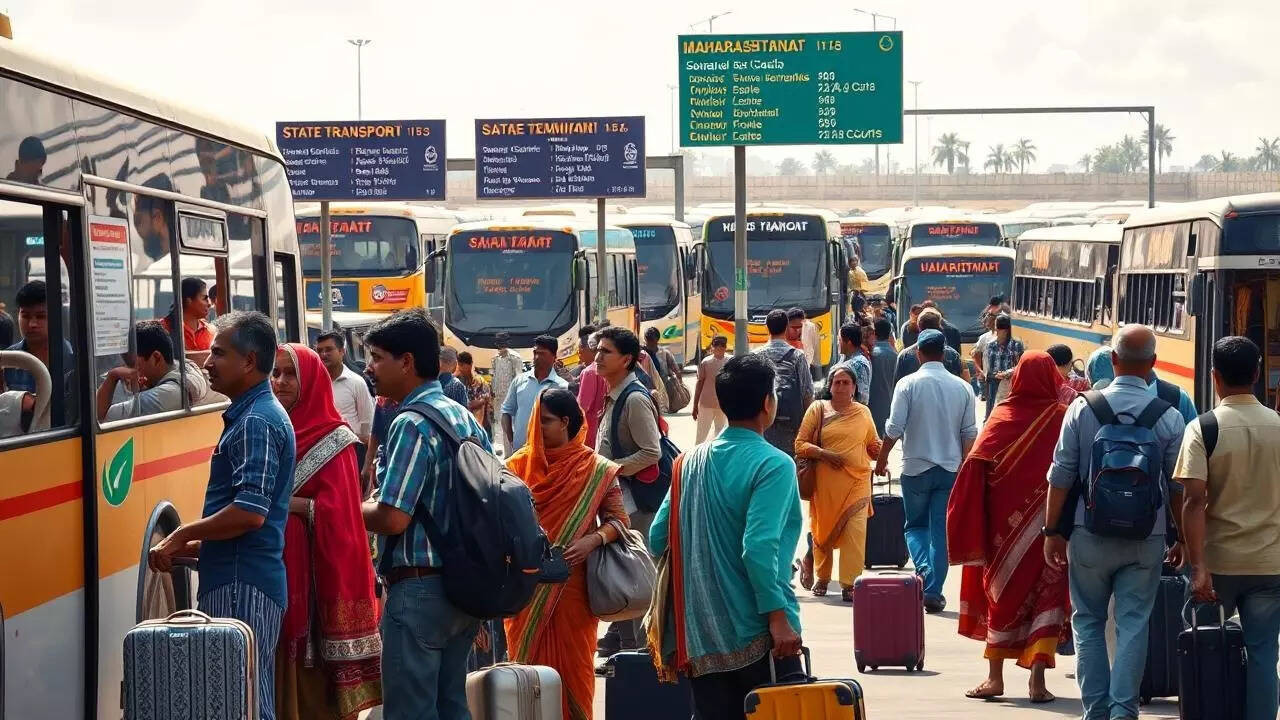Buckle Up, Buttercup: India’s Wanderlust is Officially Back in Gear!
Okay, let’s be real. Who hasn’t dreamt of ditching the everyday grind for a spontaneous adventure? The humdrum of routine, the endless emails… it all screams for an escape. And guess what? It looks like a whole lot of Indians are finally answering that call.
RedBus, that handy platform we all use when the train tickets are inexplicably sold out (seriously, how does that even happen?), just dropped some seriously interesting data. Their report is basically saying that intercity bus travel is seeing a massive comeback, spiking by a whopping 20% this year. Twenty percent! That’s not just a minor bump; that’s a full-blown resurgence.
So, what’s driving this newfound thirst for travel? Well, think about it. After a couple of years of lockdowns, travel restrictions, and generally feeling like we were living in a dystopian movie, the pent-up demand is real. We’re all itching to stretch our legs, breathe some fresh air that isn’t recycled through the office AC, and see something other than the same four walls.
But it’s not just about escaping the monotony. I reckon there’s something more profound at play here. Maybe we’ve collectively realized that life’s too short to put off those experiences we’ve always dreamt about. That weekend trip to the mountains? That pilgrimage to a sacred site? That delicious food tour in a bustling city? These aren’t just vacations; they’re investments in our well-being, our memories, and our overall happiness.
The RedBus report doesn’t delve into the why, but let’s connect some dots here, shall we? The Indian economy is showing signs of strength, even with global headwinds. More disposable income usually translates to more discretionary spending, and guess what falls squarely into that category? You got it – travel.
Plus, let’s give a nod to the incredible strides being made in infrastructure. Better roads, more frequent bus services, and improved amenities at bus stations are all making bus travel a more comfortable and convenient option. Remember those days of bone-jarring rides on rickety buses with questionable hygiene? Thankfully, those are (mostly) becoming a thing of the past. We’re talking comfortable seating, air conditioning, even Wi-Fi on some routes! It’s almost… dare I say… luxurious?
Now, I know what you’re thinking. A bus? Seriously? In a world of airplanes and high-speed trains, why would anyone choose a bus? Well, hold on a second. Consider the flexibility and affordability. Buses often reach destinations that are difficult or expensive to access by other means. They also offer a much more scenic journey, allowing you to soak in the landscapes as you traverse the country.
And let’s not forget the sustainability factor. While no mode of transport is completely carbon-neutral, buses generally have a lower carbon footprint per passenger than private cars or airplanes, especially when they’re running near full capacity. So, by choosing the bus, you’re not only saving money but also making a slightly more environmentally conscious choice.
What’s particularly interesting about this resurgence is its potential impact on local economies. Tourist dollars flowing into smaller towns and villages can create jobs, support local businesses, and help preserve cultural heritage. Imagine the ripple effect of more people exploring hidden gems and supporting local artisans!
Of course, there are still challenges to address. Ensuring the safety and security of passengers, especially women, is paramount. Investing in further infrastructure improvements, like dedicated bus lanes and more frequent services, is also crucial. And let’s not forget the importance of promoting sustainable tourism practices to minimize the environmental impact of increased travel.
But overall, the 20% increase in intercity bus travel is a hugely positive sign. It shows that India is opening up, both geographically and economically. It suggests that we are, as a nation, prioritizing experiences over possessions, and rediscovering the joy of exploration.
So, the next time you’re planning a weekend getaway, don’t automatically reach for that plane ticket. Consider the humble bus. You might be surprised at what you discover – not just about the destination, but about yourself. Maybe it’s time to embrace the road less traveled, quite literally. Who knows what adventures await? Now, if you’ll excuse me, I’m off to browse RedBus… that Coorg trip is calling my name!







